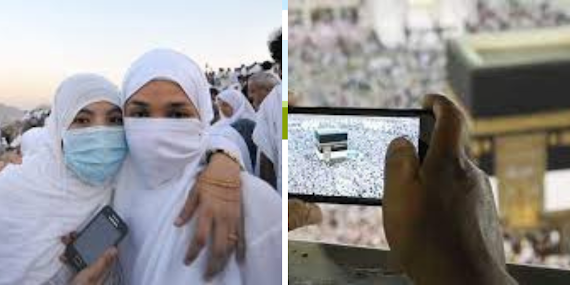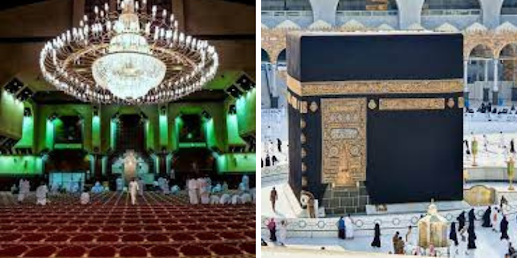How the muslims performed their activities during hajj rituals
How the muslims performed their activities during hajj rituals in detail
The Hajj is an annual pilgrimage to the holy municipality of Mecca in Saudi Arabia and is regarded as one of the five posts of Islam. It is a powerful event for Muslims worldwide, and millions of people experience it in the way per year.
Muslims perform their activities during the Hajj rituals:
- Ihram:
Before entering the condition of Ihram, pilgrims cleanse themselves by taking a ritual bath (ghusl) and putting on sanitary white attire. Men wear two seamless white sheets, one around the core and the other draped over the shoulder, while females wear loose-fitting clothes obscuring their bodies.
points about ihram
- During Ihram, pilgrims refrain from certain actions known as Ihram proscriptions, including thinning hair or nails, using fragrances, wearing sewed clothes, engaging in matrimonial connections, and hunting.
- Pilgrims recite the purpose of Hajj upon joining the state of Ihram, declaring their purpose and willingness to perform the travels.
- The state of the Ihram starts at a precise point, known as the Miqat, which changes counting on the pilgrim's location. Common Miqats include Juhfah, Yalamlam, Qarn al-Manazil, and others.
2.Arrival in Mecca:
Mosque, known as Al-Masjid al-Haram. They perform the Tawaf, which involves rotating the Kaaba, a black cube-shaped arrangement at the base of the mosque. The Tawaf consists of seven courses, and during each course, pilgrims may recite supplications and glory to Allah.
3.Sa'i:
- After finishing the Tawaf, pilgrims proceed to the area between the cliffs of Safa and Marwa to perform Sa'i. They step about and forth seven times, imitating the actions of Hajar (Hagar), the wife of Prophet Ibrahim (Abraham), who ran between the ridges scouring for water for her son Ismail (Ishmael). Pilgrims may also recite supplications and verses from the Quran during this ritual.
- The ritual consists of seven rounds, starting at Safa and ending at Marwa, protecting a total distance of around 3.5 kilometres (about 2.2 miles).
- Pilgrims start at Safa by climbing it and facing the Kaaba. They then recite exact supplications and prayers, desiring acceptance and guidance from Allah.
- Pilgrims light from Safa and walk towards Marwa at a typical pace, mimicking Hajar's trip. Men are encouraged to tread briskly between the green elements known as the "Ramal" during the first three rounds.
- Between Safa and Marwa, pilgrims continue their recitation of supplications, repeat verses from the Quran, and experience personal prayers and reflection.
4.Tarwiyah Day:
Upon reaching Mina, pilgrims finish the night there, qualifying both physically and mentally for future practices. They relax, gather their supplies, and seek spiritual direction, fully conscious that the following day holds tremendous value in the Hajj travel.
5.Arafat:
On the 9th of Dhul-Hijjah, pilgrims flow to the plain of Arafat, where they finish the day in devotion and reflection. This day is believed the most important day of Hajj, and pilgrims desire to complete all the necessary practices during their duration in Arafat. The sermon provided by the Imam at Arafat is a meaningful part of the day.
6.Muzdalifah:
After the evening, travellers depart Arafat for Muzdalifah, where they consume the evening. In Muzdalifah, they encounter worshipping, praying, and collect stones to be used for the stoning ceremony the next day. After finishing the day in Arafat, travellers depart for Muzdalifah momentarily after an evening on the 9th of Dhul-Hijjah.
- Pilgrims converge in Muzdalifah and consume the evening there, employing acts of adoration and contemplation.
- The main actions in Muzdalifah include functioning the Maghrib (sunset) and Isha (night) blessings, connecting them and trimming the Isha prayer.
- Pilgrims contain small stones in Muzdalifah, which will be used for stoning way in the future days.
7.Stoning of the Devil:
On the 10th of Dhul-Hijjah, pilgrims yield to Mina and achieve the symbolic stoning of the Devil. They toss seven stones at three pillars, conveying Satan's seduction of Prophet Ibrahim. This ritual represents the refusal of evil and the reaffirmation of belief.
8.Animal Sacrifice:
Tracking the stoning, pilgrims generally surrender a beast, usually a sheep to celebrate Prophet Ibrahim's readiness to sacrifice his son. The meat is then spread among the destitute and broke.
9.Tawaf al-Ifadah:
- After the stoning and rejection, pilgrims yield to the Grand Mosque in Mecca to complete Tawaf al-Ifadah. This Tawaf is identical to the initial Tawaf completed upon appearance but only consists of seven courses around the Kaaba.
- Sa'i and Farewell Tawaf:
- Following Tawaf al-Ifadah, pilgrims complete Sa'i again between the cliffs of Safa and Marwa. After finishing Sa'i, they yield to the Kaaba to complete a last Tawaf.
A short summary of hajj rituals
Hajj is the annual Islamic travel to Mecca, Saudi Arabia, and it consists of a sequence of patterns that hold deep spiritual meaning.
These rituals of Hajj provide a profound spiritual experience, fostering unity, humility, and devotion among millions of Muslims from around the world.





Comments
Post a Comment